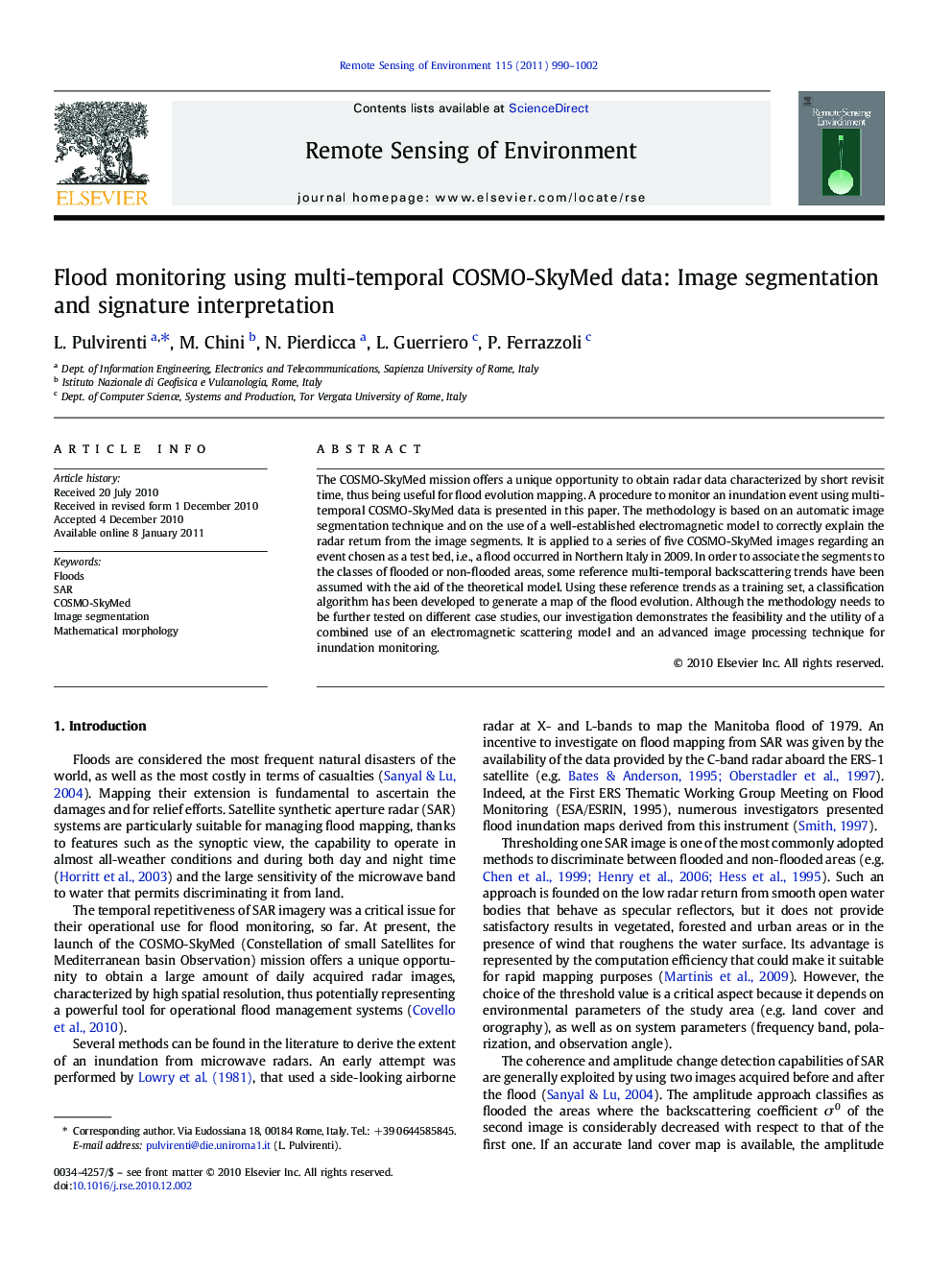| Article ID | Journal | Published Year | Pages | File Type |
|---|---|---|---|---|
| 4459559 | Remote Sensing of Environment | 2011 | 13 Pages |
The COSMO-SkyMed mission offers a unique opportunity to obtain radar data characterized by short revisit time, thus being useful for flood evolution mapping. A procedure to monitor an inundation event using multi-temporal COSMO-SkyMed data is presented in this paper. The methodology is based on an automatic image segmentation technique and on the use of a well-established electromagnetic model to correctly explain the radar return from the image segments. It is applied to a series of five COSMO-SkyMed images regarding an event chosen as a test bed, i.e., a flood occurred in Northern Italy in 2009. In order to associate the segments to the classes of flooded or non-flooded areas, some reference multi-temporal backscattering trends have been assumed with the aid of the theoretical model. Using these reference trends as a training set, a classification algorithm has been developed to generate a map of the flood evolution. Although the methodology needs to be further tested on different case studies, our investigation demonstrates the feasibility and the utility of a combined use of an electromagnetic scattering model and an advanced image processing technique for inundation monitoring.
Research Highlights►COSMO-SkyMed data useful for flood evolution mapping. ►Developed a procedure for flood monitoring using multi-temporal COSMO-SkyMed data. ►Method based on a surface scattering model and on image segmentation. ►Model-based simulations important to interpret the radar return from flooded areas.
